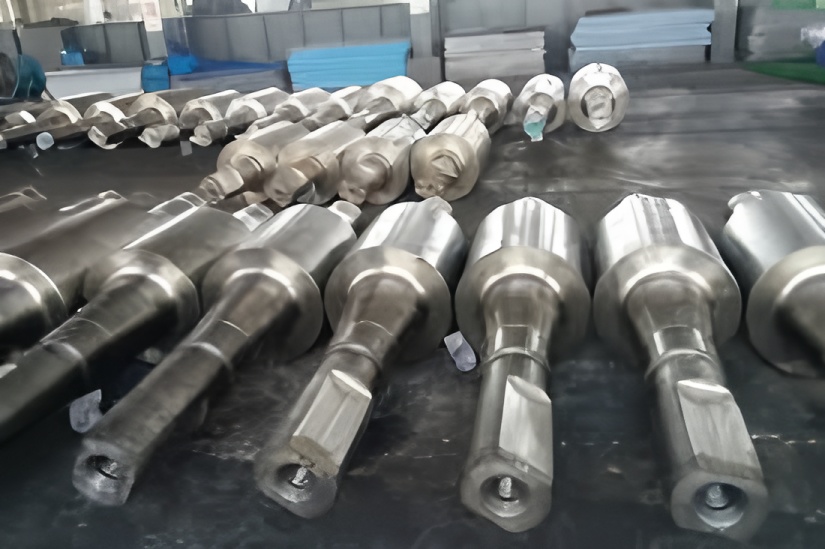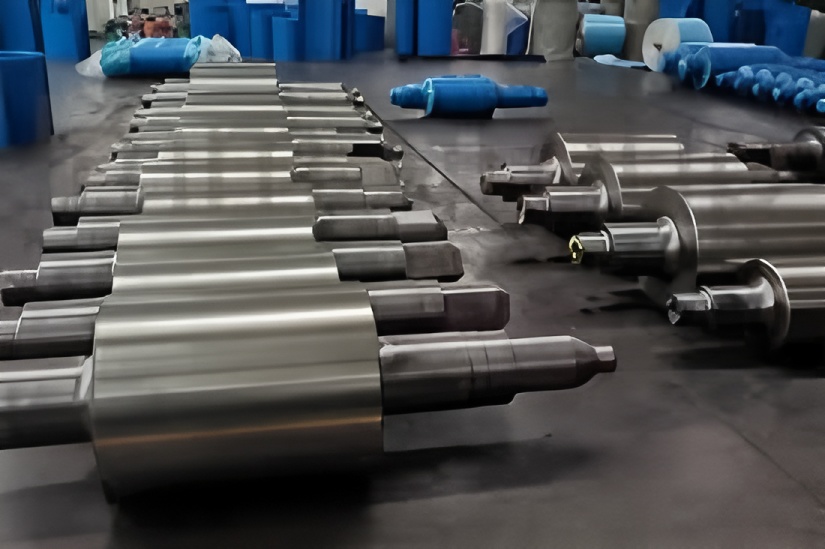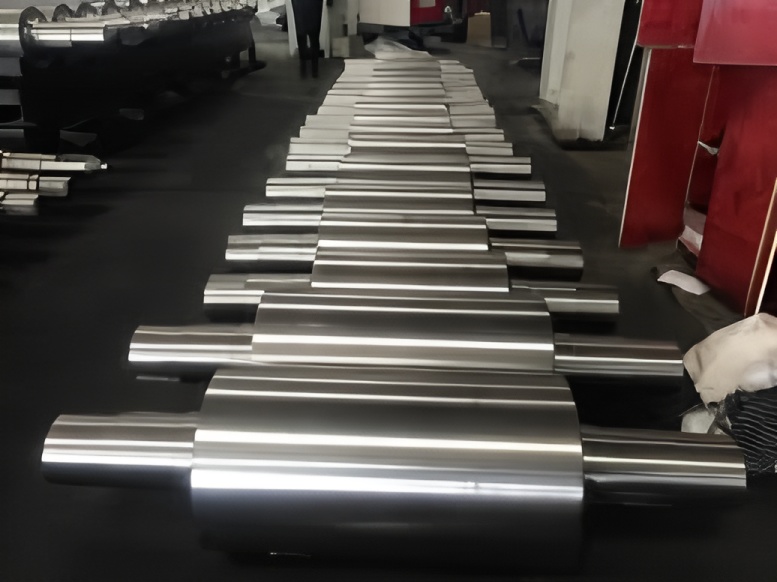Steel mill rolls are critical components that directly contact steel strips during hot rolling production. Reducing roll consumption effectively lowers production costs while improving mill operation rates and ensuring superior surface quality of hot-rolled products. Given the substantial roll consumption in hot-rolled steel strip production, implementing measures to reduce wear and extend roll life is of significant importance.

Mill Rolls Manufacturers
Optimizing Roll Changing Cycle
Roughing Roller
The original roughing roll changing cycle ranged from 2.5 to 3.8 wt. Through gradual extension and comprehensive evaluation of roll wear, strip shape, and surface quality, the current cycle has been stabilized at 3.8-4.5 wt. This optimization extends roll service life without compromising strip quality.
Finishing Roller
The varying speeds of F1-F7 rolls result in differential wear patterns on backup rolls. The previous uniform changing cycle of 10-15 wt proved inefficient. The current optimized approach features segmented changing cycles as detailed in Table 1:
Since implementing segmented roll changing, rolling volume has increased by approximately 14.94%, significantly extending service life. Statistical data also indicates reduced wave formation when rolling thin-gauge materials at end-of-cycle.
Proper Handling of Rolling Accidents
Severe rolling accidents substantially increase roll consumption, making proper accident response crucial for minimizing costs.
Stocking Accident
Immediately stop cooling water and lift the upper roll to prevent strip contact. After removing the strip, change the roll and implement gradual cooling. If immediate changing isn’t possible, idle the work roll without cooling water for 5-10 minutes (provided cracking isn’t severe) to allow temperature equalization before resuming operations.
Steel Sticking Accident
Remove adhered steel completely, then conduct thorough inspection of affected areas including hardness testing, crack detection, and flaw detection. The affected zone must be removed to ensure uniform surface hardness and eliminate cracks.
Steel Rolling Mill Rolls
Innovative Approaches to Grinding Roll Defects
Proper and timely handling of rolls after accidents minimizes damage, extends service life, and reduces consumption.
Common defect treatment methods include:
Hot Cracks
Typically caused by thermal shock during stocking or piling accidents.
Treatment: R1 and F1-F4 rolls with hot cracks can remain in service provided rolling remains stable. Cracks will gradually close and disappear through use (closed cracks don’t propagate).
Roller Steel Sticking
Caused by tail swinging or steel piling incidents.
Treatment: For severe adhesion exceeding 3mm thickness, remove adhered steel mechanically. After removal, inspect for cracks and peeling, determining cutting depth based on damage severity to eliminate defects without excessive material removal.
Edge Peeling on Work Rolls
Resulting from stress concentration at roll shoulders.
Treatment: As shoulders don’t contact steel directly, remove damaged material and grind appropriate chamfers. Adjust supporting roll chamfering methods and angles to improve stress distribution.
Backup Roll Defects
Though not contacting strips directly and having lower hardness than work rolls, backup rolls require special handling due to their higher cost.
Treatment: For edge damage, increase chamfer length during grinding. Use angle grinders for persistent defects to smooth affected areas. For mid-roll damage, combine conventional grinding with angle grinding to smooth defect peripheries.
Key Considerations in Rough Rolling Process Control
Roll Profile Adjustment
Based on production , F1-F4 rolls have been transitioned from concave to HVC profiles. The negative crown of F5-F7 rolls has been increased to improve surface stress distribution, enhancing both shape control and roll life.
Additional Wear Reduction Measures
Conduct regular training on accident handling to improve response times and minimize roll damage
Establish comprehensive roll inspection standards to ensure quality while reducing unnecessary losses
Partner with reputable manufacturers like HANI to supply custom rolls matching specific production characteristics
Implement high-speed steel rolls for front-section finishing operations once production stabilizes

Conclusion
The optimized HVC roll profiles and adjusted negative crown configurations improve stress distribution while enhancing strip crown control capabilities. Strategic roll changing cycles, effective accident response protocols, and proper roll handling procedures collectively increase single-roll rolling volumes and extend service life. These measures also reduce unnecessary grinding operations, consequently decreasing workforce labor intensity.


